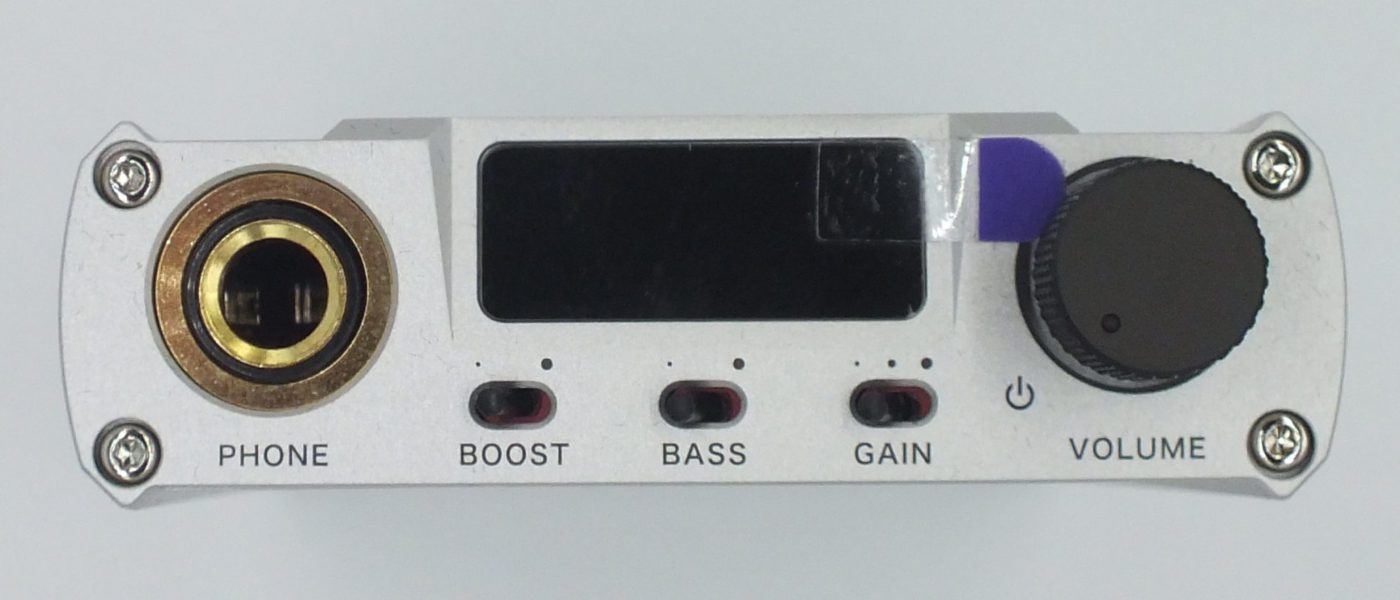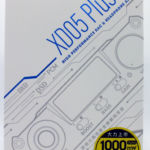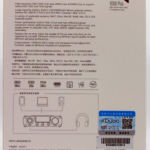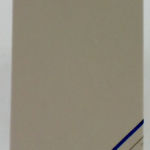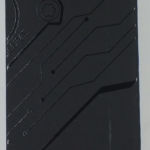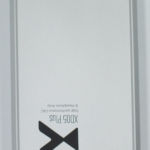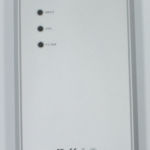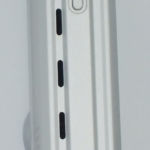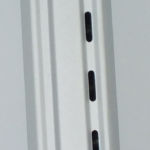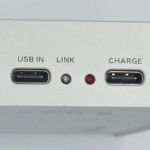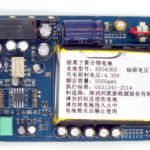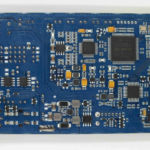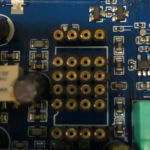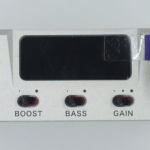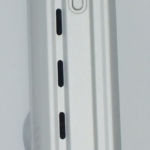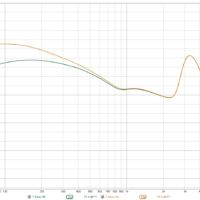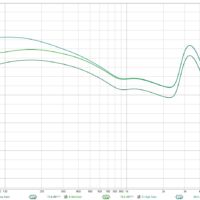Xduoo XD-05 Plus
Disclaimer: The XD-05+ was provided by Xtenik for this review at my request. I have owned the XD-05 for several years now and think it may well be the best product Xduoo has released to date. As such, when Steven told me the XD-05+ had become available, I was anxious to review it and requested that he send me a unit for review. I do not have a financial interest in Xtenik or in Xduoo. Should you want more information or to purchase an XD-05+, give Xtenik a try.
Unboxing / Accessories:
I normally try not to imbalance the importance (or lack thereof) of the packaging by having a ton of photos of it, but this is just a cool box. The outer packing has the line drawing of the XD-05+ (the Plus) that wraps around the box in blue and gray. The box rear has all the spec information in a well organized and easy to read layout. Remove the outer box, and the inner box has the line drawing again, but this time in satin black in contrast to the flat black finish of the rest of the box. Again, the graphic wraps around the box and gives the box a very distinct look. Lifting the cover of the box reveals the unit in a foam surround with all other accessories hidden in a box underneath it. The kit has two usb interconnects (micro to C, and C to C), a USB-C to USB-A cable for computer connection or charging, a neoprene pad to place between phone and the XD-05+, extra screws, feet, and a 6.3 to 3.5mm jack adapter. A fairly complete manual and a warranty card round out the package.
Build:
Those familiar with the previous generation unit will recognize the form factor of the Plus immediately. Other than its silver exterior, the externals of the unit have not changed much. The entire unit is metal cased, with thick face plates. The biggest external difference other than color is the Logo and position of it as the original had two lines of text near the rear of the unit, while the Plus has a logo and model name a bit to the right of center and a bit further forward. The front face plate remain the same from the previous generation as does the volume control. The front face still has the three switches on the front, but the input funtion from the original is now the boost function of the Plus with the input switch being moved to the side. The rear face plate is a bit remodeled with the auxiliary and digital 3.5mm inputs remaining in the same position, but gone is the USB-A input and the Micro-USB charge port, replaced with a pair of USB-C ports for charging and input respectively. Buttons on the Side, are now input in place of display, SRC, and filter (More on those later).
Internals:
Those familiar with the XD-05 will be most interested in what changed and the answers are a lot more apparent on the inside than on the exterior of the unit. Starting from the inputs, the USB duties are now handled by the Xu208 which allows for PCM up to 32/384 and Native DSD256 support. Optical and coaxial inputs are still limited to 24/192 if one can realistically call that a limit. DAC duties are now handled by the AKM4493EQ in place of the 4490 used in the previous generation. Not all of the features of the chip are usable as the input limits it below its 32/768 PCM maximum and DSD 22.4 mhz max. Clocking is handled by two oscillators at 22 and 24 Mhz respectively. One plus is DSD64 is now supported over coax input unlike the original.
The Op-amp is still seated in a Dip-8 socket to allow for easy swaps, but now the socket is designed to allow use of either One Dual op-amp or two Single Op-amps. TI OPA1612. I did my listening with the stock op-amp (still OPA1612) and then promptly swapped in a pair of Muses03 and later a single Burson V5i to see what impact they had on sound quality.
Power:
Power is provided by two 5000 mAh lithium polymer cells stacked in the center of the unit. Battery life is listed at >13 hours for USB input, >21 hours for Coaxial input, and >40 hours if bypassing the dac portion and only using the amp section of the unit. I had no trouble getting over 12 hours on USB and 18 on Optical so find the provided numbers to be believable and not overly optimistic as they often are.
Controls:
All controls are either on the front of the unit or down the side nearest the headphone jack. On the front are three switches for boost, bass, and gain. Boost is listed as an increased thrust switch which isn’t a particularly useful definition. More accurately, boost is the Impedance matching switch with the off position for headphones at or below 150Ω and the on position for things exceeding that same value. For the other two switches, differences are readily seen on FR so, I have paired the XD-05+ to my measurement laptop and then to a Brainwavz B400. The FR graphs below show the output of the unit with and without the bass switch engaged to show what frequencies are pushed forward or pulled down. Likewise, I did the same for gain to show the amount of gain applied by each setting. The initial measurement is deliberately low to allow headroom for the high gain in the later as no adjustment to volume was made in order to maintain a valid comparison.
Buttons on the side of the unit allow the user to select input type, src, and filter. Input type gives the options for USB, Coax, Optical, or Auxiliary in. On the display, these are shown in the lower left to indicate which input is in use. The Src button only works with Coaxial/Optical input and allows the user to select to force resampling to 48,96, or 192kHz. Settings are displayed on the left of the screen above the Coaxial or Optical indicator and will show SRC48, SRC96, or SRC192 respectively. If none of those is shown, resampling is off. The last of the buttons is filter and this one is a bit more involved. For PCM, 4 possible settings are available and are listed on the lower right under the charge indicator. PCM1 is Sharp roll-off, PCM2 is Slow Roll-off, PCM3 is short delay Sharp, and PCM4 is short delay Slow. When using DSD, it is a bit more complex with 2 settings. Setting DSD1 will result in 39kHz for DSD64 files, 78kHz for DSD128, and 156kHz for DSD256. DSD2 will result in 76kHz for DSD64 files, 152kHz for DSD128, and 304kHz for DSD256. There is also an undocumented function that by holding all three side buttons in brings up the menu to default the unit. Once that menu is activated, input allows for selection of yes or no, and filter acts as the enter/return key. Choosing no and hitting enter will return the unit to normal operational mode.
Sound:
Bass: Without the bass switch active, the bass has good slam and rumble without being overly assertive or bloated. With the bass boost enabled, bass below 400Hz does get considerably more forward but at the cost of quality. Bass boost is rarely something that performs well and unfortunately the bass boost on the Plus carries all the hallmarks of stereotypical bass boosts. The best thing about the Plus with nearly a full watt of power available to it, the low end is more potent and more dynamic than its predecessor and with all but the most demanding headphones, the Plus has the ability to drive them to full capability.
Mids: The Plus does a good job of presenting the mids without coloration as it does not seem to elevate the upper-mids or attempt to push vocals to the front. If anything, vocals could use a bit more thickness than they are presented with. This is not to say they are overly lean, just that the sound is not as full as it could be. I did find this improved when going to the Muses03 op-amps so this may be more of function of the op-amp in play than the device itself. The Plus does a good job with vocals as they are well rendered without the grain that comes through on some other amplifiers in this price range.
Treble: Here again, the Plus does a good job of presenting what is there without introducing its own slant on it. Treble is well extended with good energy, but not pushed forward or exaggerated. I did find that the difference in mid and high gain seems to alter the signature more at the bottom and makes the treble seem a bit recessed by comparison to lower gain settings. This is not to say the treble is recessed but the gain applied seems to be from 1kHz down when moving from mid to high gain and effectively becomes a form of low-end boost.
Output Power:
The XD-05+ is not lacking in power either. Specs show a full 1 Watt output power into a 32Ω load. I found it had no trouble powering things like the Fostex T50rp or He560 to levels above those safe for average listening. Noise floor is fairly low on low gain, but some sensitive iems will still have some hiss as the XD-05+ is really not designed with ultra-sensitive iems as its target audience. I found that something like the ie-match could be used in conjunction with the XD-05+ and sensitive iems to reduce noise floor to inaudible levels.
Bluetooth:
The unit does not support Bluetooth by itself, but does have an add-on, the 05BL that adds this functionality. I have an 05BL that I had previously used with the original XD-05 so transferred it to the Plus to test out its compatibility. The unit works well but looks a little less at home as the matte silver Plus stands in contrast to the polished black 05BL. My biggest complaint on the Bluetooth unit is the fact that it obstructs the input ports so must be removed in order to charge the unit, and with having a separate battery for the Bluetooth module, it has to be charged independently as well. My take away is while the Bluetooth add-on works well, the XD-05 Plus is really at its best with full sized wired headphones and those looking for a Bluetooth solution can likely find more user friendly solutions for the same spend (even in Xduoo’s product line – see XQ23 or XQ25).
Comparisons:
I have attempted to compare other similar devices in the market. These are all within a $100 of each other and all are DAC/Amp combinations although feature sets will vary.
Fiio Q5 $299 list + $159 list for AM5 module
(At time of this writing Fiio has updated the Q5 with the Q5s which comes with the AM3e module as opposed to the Q5 with the Am3a – Hopefully we will have a review sample of it to put through it’s paces one day soon).
The Q5 uses dual AK4490 chips compared to the Pluses single 4493 and both support 32/384 PCM. DSD support to 256 is also built into the Q5 so both stay within striking distance of each other on that front. The Q5 does package Bluetooth into the base device for those who want it and offers interchangeable amplifier modules to suit the users choice of headphones. That is the good news, the bad news is, in order to equal the output power of the Plus, you’ll need the AM5 amplifier which adds another $150-200 to the cost depending on where you get it, and then expect battery life on the Q5 to be considerably diminished as the AM5 draws considerably more power than the default AM3A that comes packaged with the Q5. The AM3a does support balanced output and is better suited to high sensitivity iems than the Plus as its noise floor is a bit lower. Realistically, the Q5 does its best work with iems while the Plus is more targeted to full sized cans. You can force either of them into the others lane, but neither is able to show off its full capability by doing so.
iFi xDSD $399 list
The xDSD is iFi’s swiss army knife of an audio device and offers a ton of features in a very small package. Size is about two-thirds that of the Plus but weight is more closely matched. The xDSD has the capability to play higher resolution files (768kHz PCM and DSD512) than the Plus for those that have sources in those ranges and also supports MQA. The plus exposes more of the filters where the X offers only two. Bass Boost is better on the x while the Plus offers the ability to selectively resample coax or optical input. The X fires back by including Bluetooth in the base unit rather than requiring an add-on. Battery life favors the Plus with the xDSD falling to about 2/3 the runtime of the Plus before needing a recharge. Both offer great sound, but the Plus brings a bit more potency for those running hard to drive cans. Both units score enough points that calling a winner is tough, for those wanting more battery life and a bit more power the Plus will get the call, for those with MQA, the xDSD is perhaps a better option.
Sony PHA1A $300 list
This really isnt a fair fight and does a lot to show the age of the Sony device. The PHA1A was great when introduced but now the WM8790 is starting to show its age. The PHA1A only supports USB input, and tops out at 24/192 with no DSD support. The Amplifier in the PHA1A is an LME49860 design and while fairly potent struggles to come near the Plus in overall output power. Topping off the hits, battery life on the PHA1a is a mere 6 hours compared to the Plus. Sony is due to release a refreshed line-up soon, maybe that model will have the features to compete on a more even footing.
Chord Mojo $500 list
At double the price, it is hard to call the Mojo a direct competitor, but with it’s overwhelming popularity, I would be remiss not to include it. That extra money, gets a 32/768 USB or coaxial input while the optical on Mojo is actually more limited than the Plus (96/24). Mojo’s battery life is considerably less at 8 hours and many including myself have had issues with the Mojo getting outright hot while charging, (especially while charging during use). Output power on Mojo is about 3/4 of the Plus so its noise floor is lower, but its not quite as capable with heavy cans. The fact that Mojo splits its output between two 3.5mm outputs also calls into question how much of that output is really available to either jack if both are in use. One of the big upsides to Mojo is that rather than using a dedicated DAC, it uses a microprocessor (Xilinx Artix 7) thus can be re-programmed to support newer standards rather than being hardware limited. With the current firmware, DSD playback is limited to the same options as the Plus, but in theory could be improved upon with a flash update. Both are aluminum shelled with the Mojo being a bit more artistic while the controls on the Plus are a bit more easily understood and the display makes more sense than the Mojo’s colored buttons arrangement. Mojo is starting to show its age with micro-USB ports instead of USB-C. Having been several years since release, it is possible that a Mojo2 could be on the horizon, but to date no announcement has been made that I am aware of.
Conclusion:
I am going to start my conclusion by reminding the user that I said at the outset that I thought the XD-05 was probably the best product Xduoo has released. The good news is the XD-05 Plus does nothing to change my mind. It retains all of the things that made the original model a hit and adds some welcome new options. The ability to swap op-amps was nice on the original but the plus opens the door to using either a double to two singles without having to use adapters that are too tall for the case to close. Tonality is good as it neither tries to add anything nor does it particularly detract from any single element. The option of USB-C, coax, optical, or analog input makes it a truly versatile travel companion, and the nearly full Watt output power makes it capable of replacing many desktop rigs. The downside is bass boost is still clunky and best avoided, and bluetooth functionality is added by an external module rather than being baked in as is now pretty common. The XD-05 Plus is a great device with a lot of capability, not a perfect one for every use case. I can live with that, my bet is you probably can too.
Xduoo XD-05 Plus
-
Packaging - 8/108/10
-
Accessories - 7/107/10
-
Build Quality - 8/108/10
-
Sound Quality - 8/108/10
-
Battery Life - 9/109/10
-
Connectivity - 7.5/107.5/10
Summary
Pros: Improves on an already great product, allows easy swapping of op-amps and exposes filters.
Cons: Noise floor is not as black as it could be, no Bluetooth without an add-on, No MQA support.

